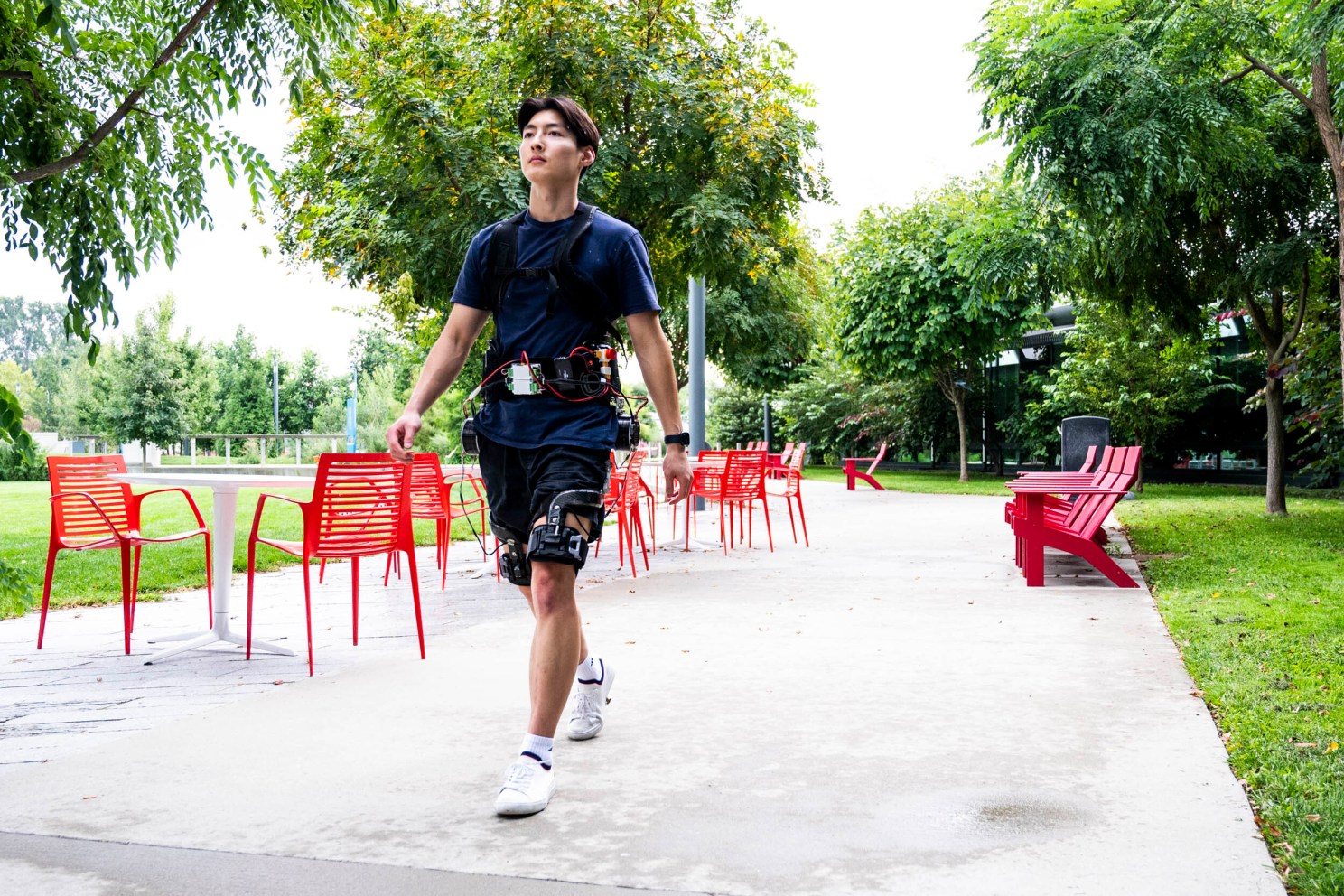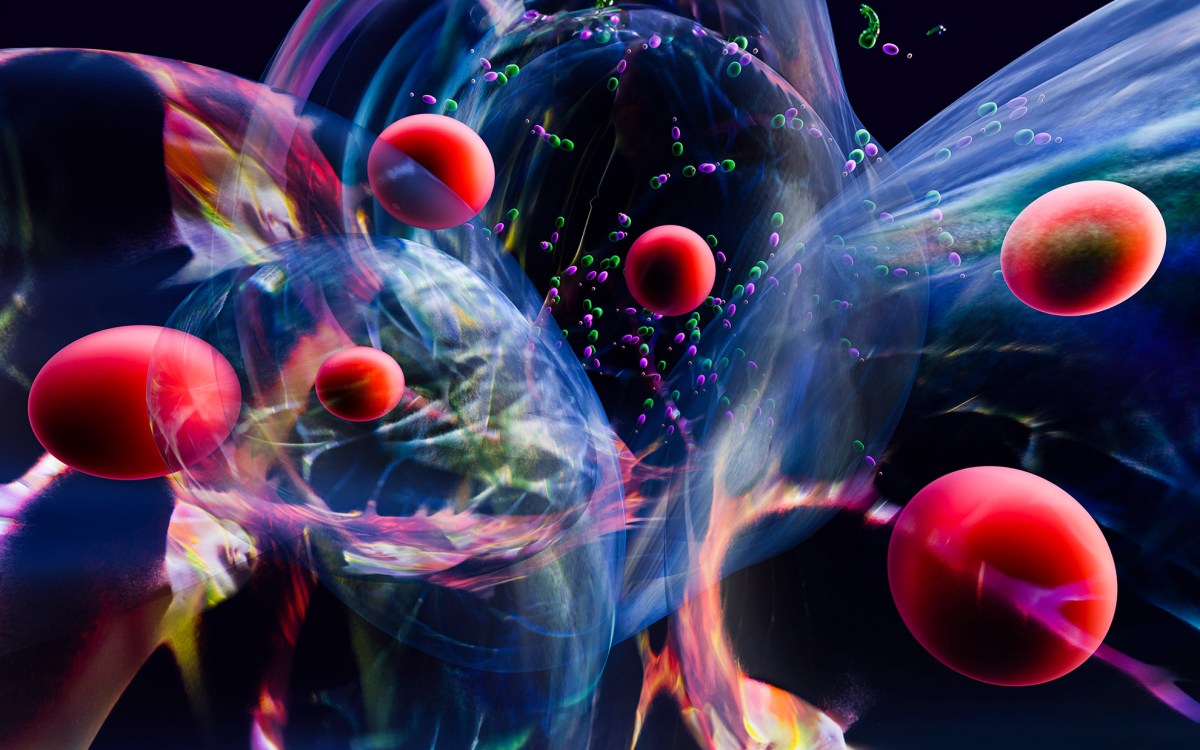Using tools of AI to help people with mobility disorders

Researchers are using insights gleaned from AI-generated simulations to build real-world biomedical devices with the potential to improve the lives of people with motor challenges. Above, a member of the Slade Lab uses a prototype of an “exoskeleton” for assisting people with walking difficulties.
Photo credit: Slade Lab
Many of the skills that humans consider intelligent involve conscious effort, including prediction, long-term planning, and abstract problem solving. Movement, by contrast, is something most people take for granted. It seems effortless and intuitive — a world away from the kinds of activities typically evoked by the word “intelligence.”
But for Patrick Slade, Kempner Institute associate faculty member and an assistant professor of bioengineering at the Harvard John A. Paulson School of Engineering and Applied Sciences (SEAS), skilled movement is one of the hallmarks of truly intelligent behavior, and a major frontier for cutting-edge research. The Slade Lab uses bioengineering and artificial intelligence techniques to better understand neuromotor principles and develop technologies to help people move.
“There are many mobility disorders that disrupt our ability to control our bodies,” says Slade. “So we need to better understand neuromotor control in order to help rehabilitate people.”





